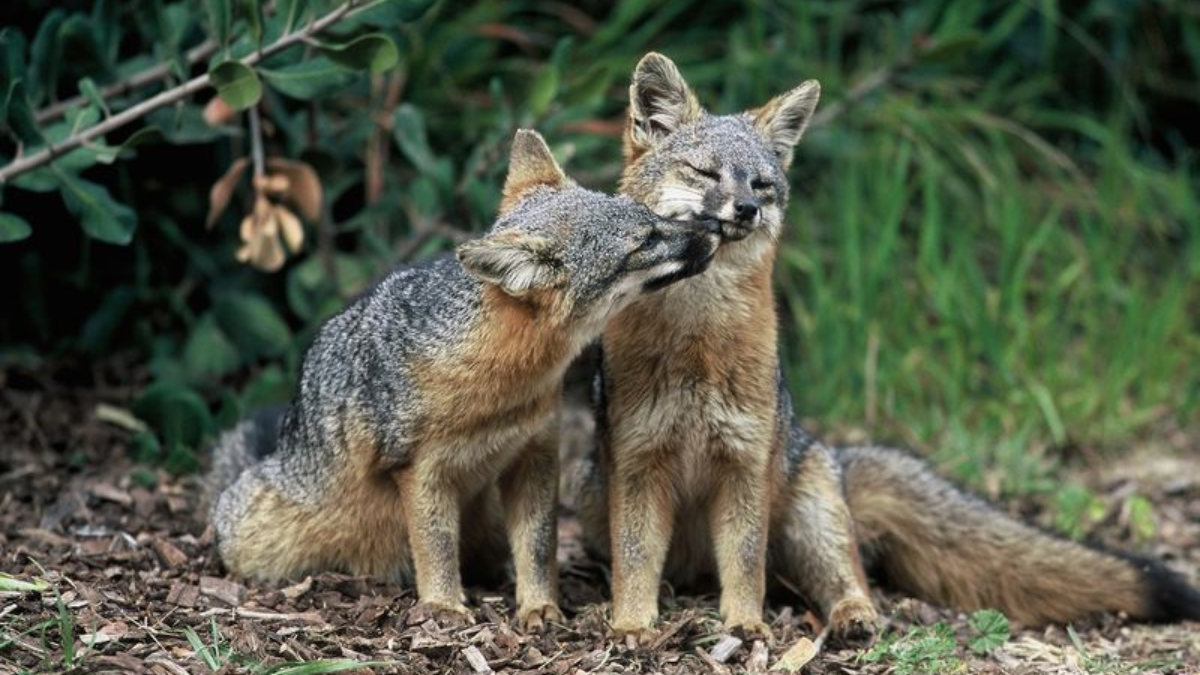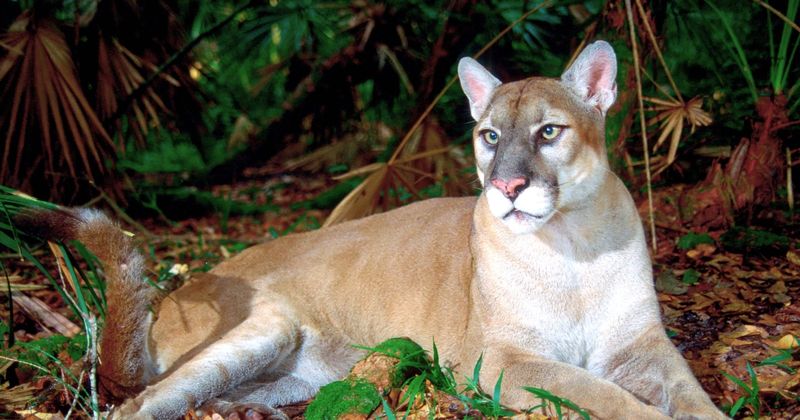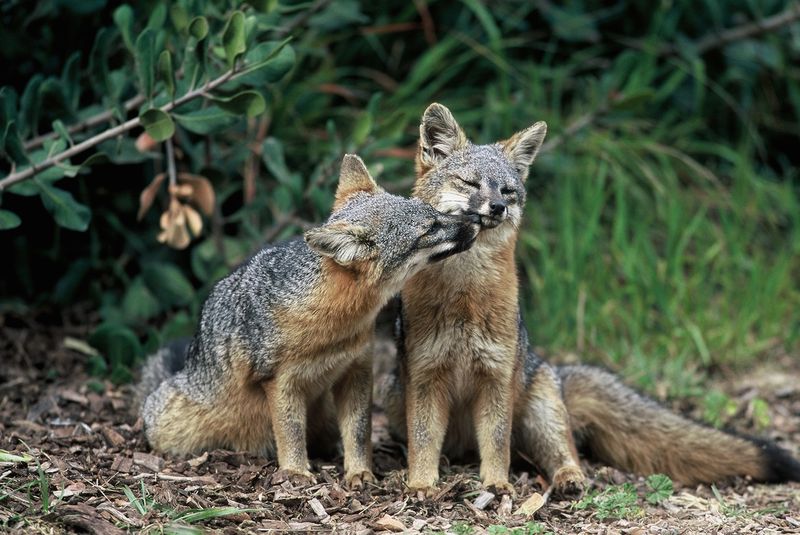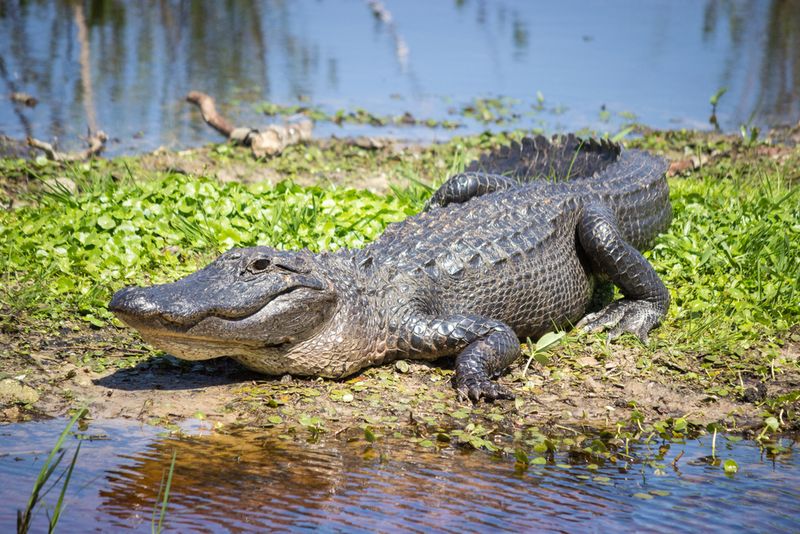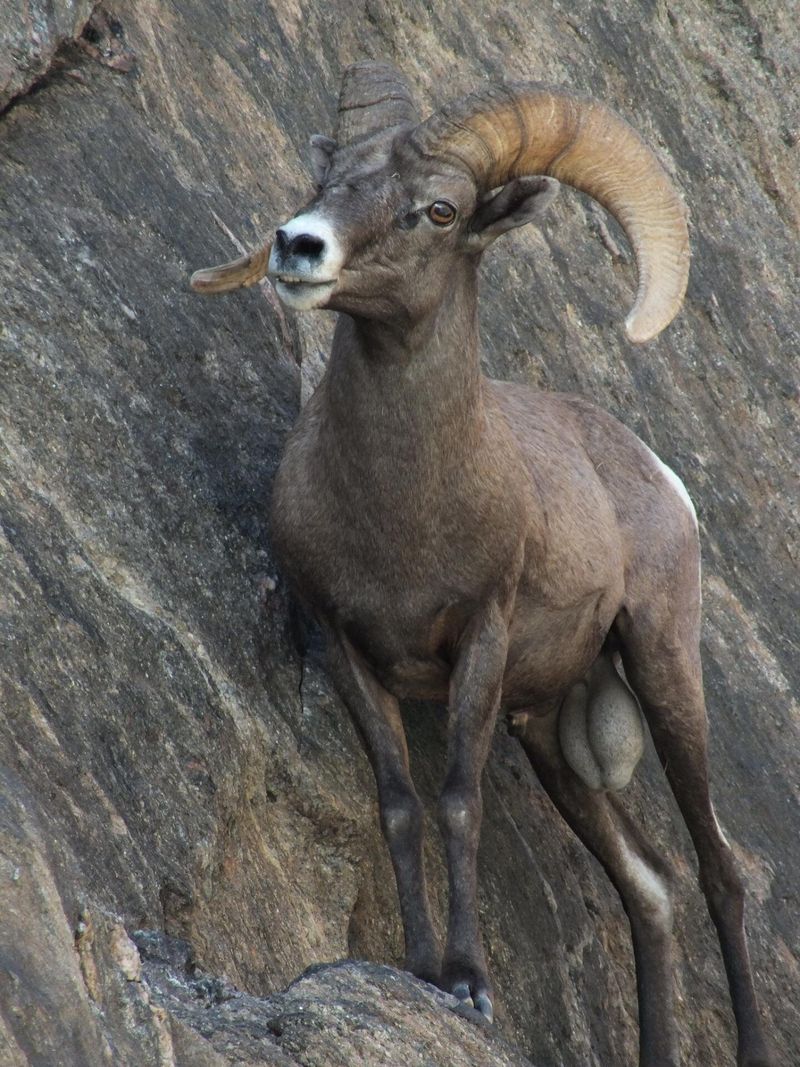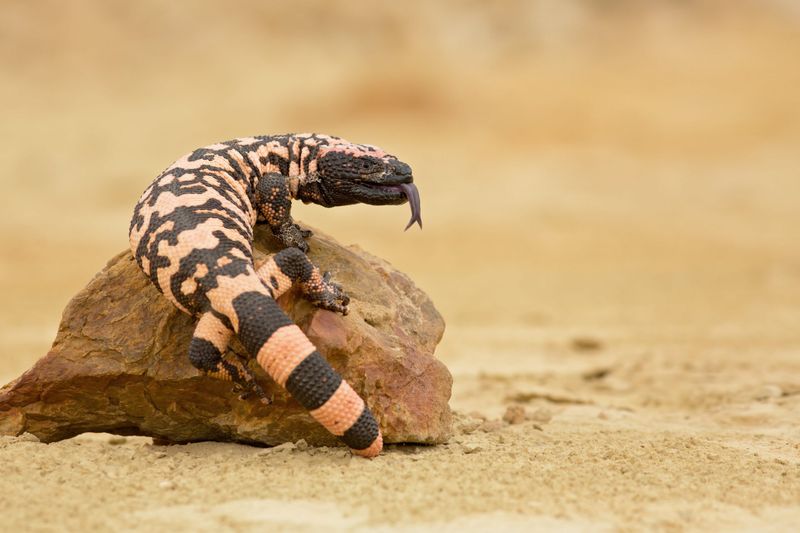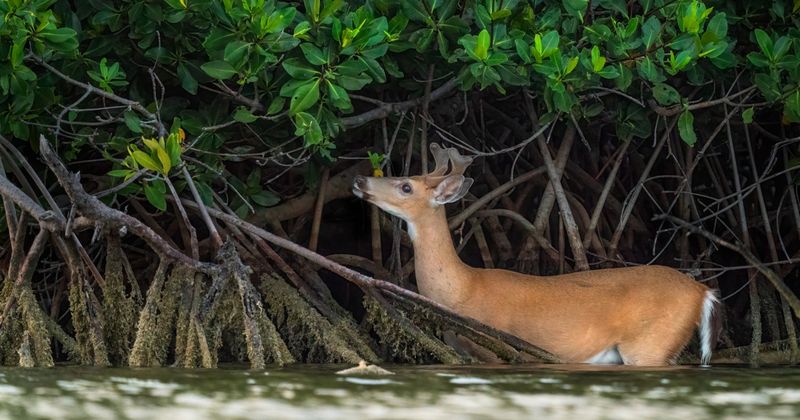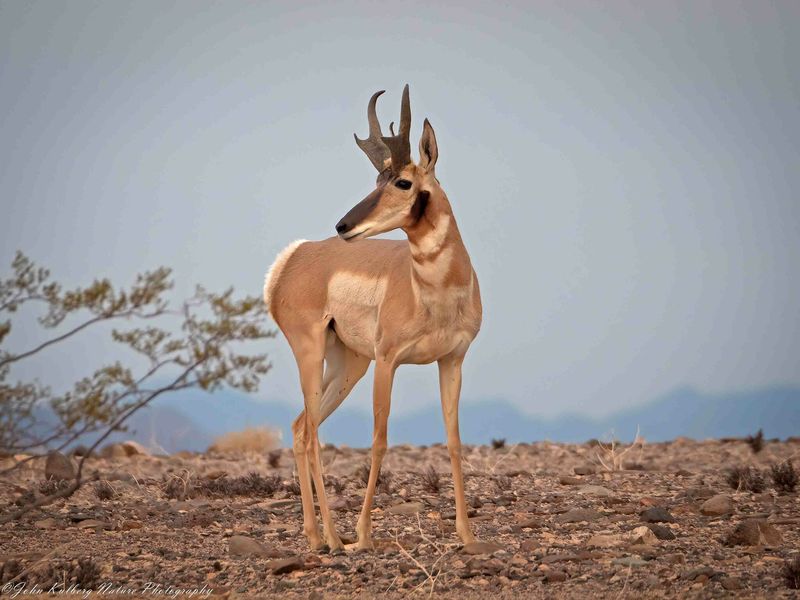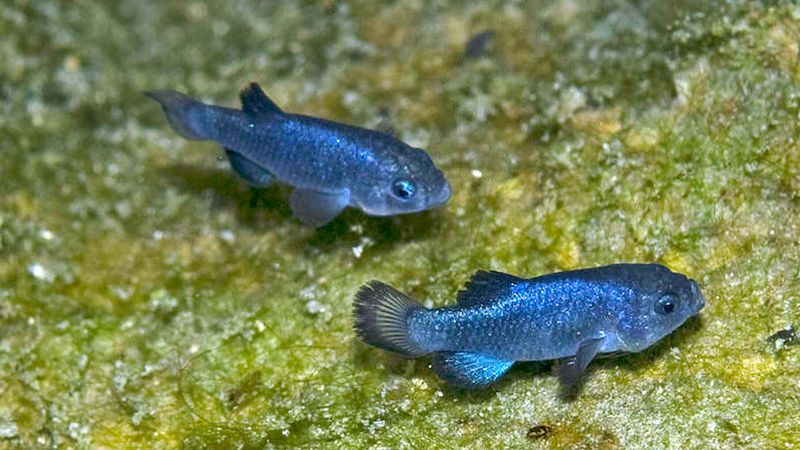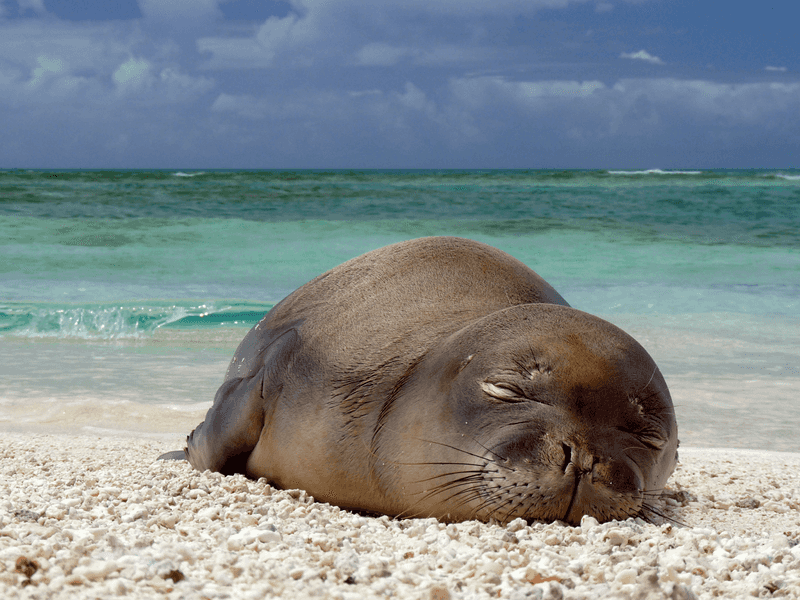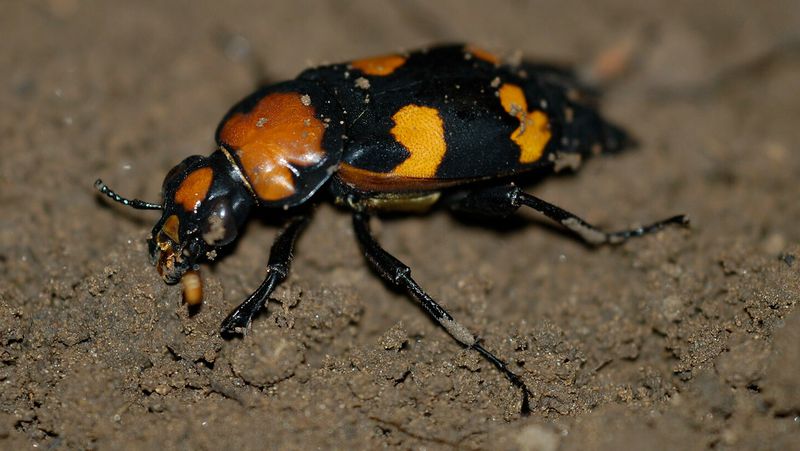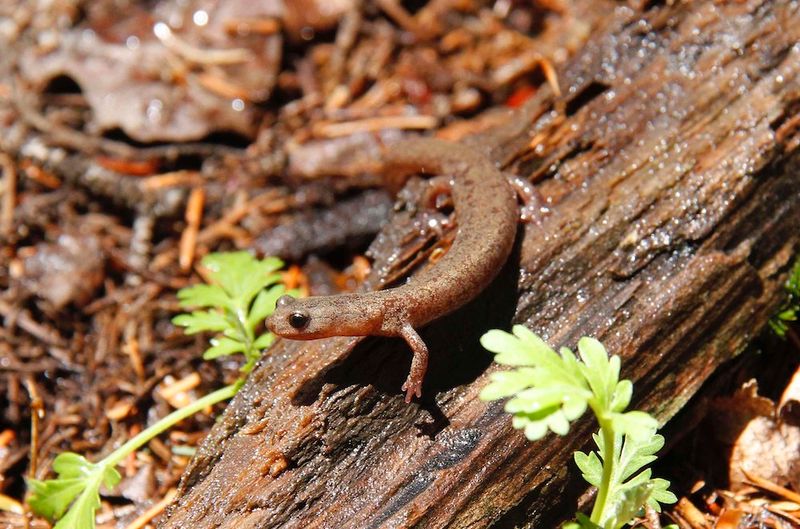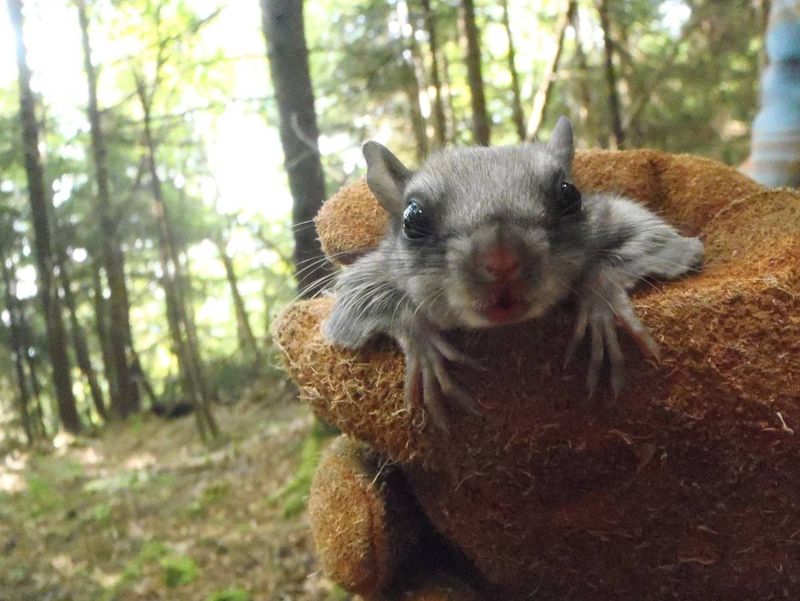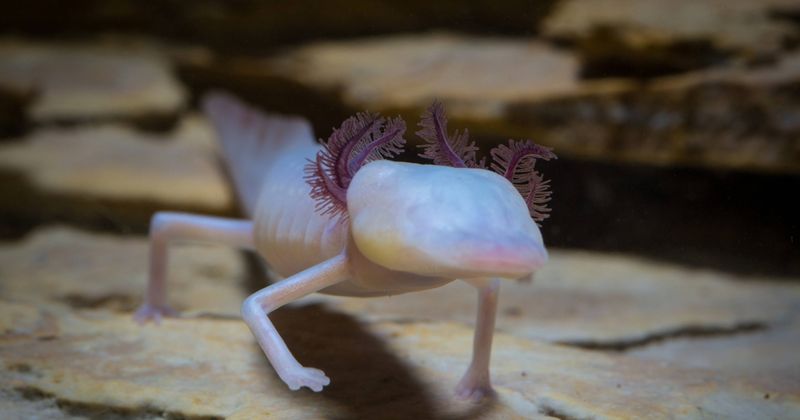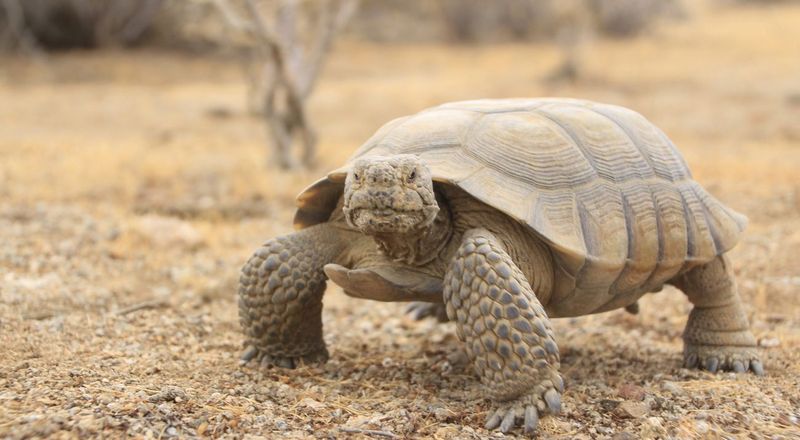📖 Table of Content:
- 1. Florida Panther
- 2. Channel Islands Fox
- 3. American Alligator
- 4. Desert Bighorn Sheep
- 5. Gila Monster
- 6. Key Deer
- 7. Sonoran Pronghorn
- 8. Devils Hole Pupfish
- 9. Hawaiian Monk Seal
- 10. American Burying Beetle
- 11. Jemez Mountains Salamander
- 12. Virginia Northern Flying Squirrel
- 13. Texas Blind Salamander
- 14. Desert Tortoise
The United States is home to a remarkable variety of wildlife that exists nowhere else on Earth. These unique creatures have adapted to specific American ecosystems over thousands of years, developing traits perfectly suited to their native habitats. From tiny desert-dwelling rodents to powerful predators of the North, these endemic species represent America’s extraordinary biodiversity and showcase nature’s incredible ability to specialize.
1. Florida Panther
Florida panthers roam exclusively in the swamps and forests of southern Florida. Once on the brink of extinction with only 20-30 individuals left in the wild, conservation efforts have helped their population grow to around 200 today.
Their unique genetic makeup gives them distinctive features like a kinked tail and a cowlick of fur on their backs. Unlike other mountain lion subspecies, Florida panthers have adapted to the humid subtropical climate and specialized in hunting prey like white-tailed deer and wild hogs in wetland environments. They can travel up to 20 miles a day within their territory, which typically spans 200 square miles for males.
2. Channel Islands Fox
Six subspecies of these tiny foxes inhabit six of California’s Channel Islands, evolving separately on each island. Their diminutive size—about the size of a house cat—represents an evolutionary phenomenon called island dwarfism, where species become smaller to survive with limited resources. Each island population has developed subtle differences in size, coloration, and behavior.
These foxes faced near-extinction in the 1990s due to predation by golden eagles, but intensive conservation efforts led to one of the fastest recoveries of any endangered mammal. Unlike mainland foxes, they have a remarkably tame demeanor around humans, having evolved without natural predators until recent centuries.
3. American Alligator
American alligators dominate the wetlands of the southeastern United States as apex predators. Their ancestors survived the mass extinction that wiped out dinosaurs, making them living fossils that have remained largely unchanged for millions of years. Unlike their crocodile cousins, these reptiles have a broader, U-shaped snout and can’t tolerate saltwater for long periods.
They’ve developed remarkable adaptations, including the ability to regrow lost teeth up to 50 times and specialized sensory pits along their jaws that detect prey movement in water. During winter, they create “gator holes” by clearing vegetation and mud, which provide crucial water sources for other wildlife during dry seasons.
4. Desert Bighorn Sheep
Masters of the desert mountains, bighorn sheep use their specially adapted hooves to climb where few creatures dare. With soft, traction-enhancing centers and tough outer rims, their feet let them conquer sheer cliffs and escape predators with ease.
Males develop massive curved horns that can weigh up to 30 pounds—nearly 10% of their body weight. These horns serve as status symbols and weapons during mating season battles. Desert bighorns have evolved efficient water conservation systems, obtaining most moisture from desert vegetation and being able to lose up to 30% of their body weight to dehydration without ill effects. Their specialized digestive systems can process the tough, thorny plants that other herbivores avoid.
5. Gila Monster
Found only in the Sonoran and Mojave deserts, Gila monsters are among the rare venomous lizards on Earth. Their striking orange-pink and black coloration results from bone deposits embedded in their scales. Rather than injecting venom like snakes, these lizards slowly chew venom into their prey through grooves in their lower teeth.
They’ve evolved to store fat in their tails and can survive on just three large meals per year. Scientists discovered a compound in their venom that led to the development of a medication for type 2 diabetes. Despite their fearsome reputation, they move slowly and spend 95% of their lives underground.
6. Key Deer
Key deer represent another fascinating example of island dwarfism, standing just 24-32 inches tall at the shoulder. These miniature white-tailed deer live exclusively in the Florida Keys, primarily on Big Pine Key and surrounding islands.
Their small size allows them to navigate the dense vegetation of their island habitat and reduces their need for food and water. Key deer have adapted to drink both fresh and saltwater, a rare ability among mammals. Their population dwindled to just 25 animals in the 1950s but has rebounded to around 1,000 today thanks to conservation efforts. They’re excellent swimmers and will move between islands, sometimes traveling several miles through water.
7. Sonoran Pronghorn
As North America’s fastest land mammal, the Sonoran pronghorn races across its desert home at speeds up to 35 mph. This desert-adapted species, unique to the Sonoran Desert regions of Arizona and northern Mexico, uses its large eyes and wide 320-degree vision to keep watch for predators.
Sonoran pronghorns have evolved to survive extreme desert conditions, extracting moisture from cacti and going without drinking water for weeks. Their hollow hair provides exceptional insulation against both heat and cold. Unlike true antelope, their horns feature a forward-pointing prong and they shed the outer horn sheath annually while retaining the bony core.
8. Devils Hole Pupfish
In a tiny limestone cavern deep in Nevada’s Mojave Desert, Devils Hole pupfish survive in possibly the world’s smallest natural home for a vertebrate species. Measuring about one inch, these iridescent blue fish have existed in isolation for thousands of years, with their wild population hovering between 35 and 200—the rarest of their kind.
They’ve adapted to water temperatures around 93°F—near the upper limit for fish survival—and extremely low oxygen levels. Their habitat consists of a small shelf just 6 feet by 13 feet in size, where they feed on algae. They’ve evolved a flattened head and larger fins compared to related pupfish species.
9. Hawaiian Monk Seal
Found only in the Hawaiian archipelago, Hawaiian monk seals are one of the rarest marine mammals worldwide. With a population under 1,400, they are one of just two monk seal species still in existence today.
Their name comes from the folds of skin around their neck that resemble a monk’s hood. Unlike other seals, they’re solitary animals that prefer to hunt and rest alone. Hawaiian monk seals can dive over 1,600 feet deep and hold their breath for up to 20 minutes while hunting for fish, eels, and octopuses. They’ve evolved specialized whiskers (vibrissae) that can detect the subtle movements of prey hiding under sand.
10. American Burying Beetle
American burying beetles stand out with their striking orange-black coloration and remarkable parental care uncommon in the insect world. These endangered insects were once found across 35 states but now exist in just a handful of isolated populations. They earned their name from their practice of burying small animal carcasses as food sources for their larvae.
A male-female pair can move a carcass 200 times their own weight by working together to dig beneath it. Both parents stay to care for their young, regurgitating partially digested food for them—a rare behavior among insects. They’re equipped with specialized mites that hitch rides on their bodies and help keep the buried carcass free of competing organisms.
11. Jemez Mountains Salamander
In the cool, high-altitude forests of New Mexico, the lungless Jemez Mountains salamander survives by breathing through its skin. These small, 2- to 5-inch amphibians blend into the volcanic soil as they hide under rocks and fallen logs for most of their lives.
They’ve adapted to the region’s dry climate by remaining inactive for up to nine months of the year, emerging only during the monsoon season when humidity is high enough to keep their skin moist. Their specialized diet consists primarily of beetle larvae, earthworms, and other small invertebrates found in rotting logs. Forest fires and climate change threaten their limited habitat, which spans just 27 square miles in the Jemez Mountains.
12. Virginia Northern Flying Squirrel
Gliding gracefully through the night skies of the Appalachian Mountains, Virginia northern flying squirrels rely on a special membrane—called a patagium—that extends between their limbs. Found only in isolated areas above 3,000 feet in Virginia and West Virginia, this rare subspecies is a true mountain dweller.
Their enormous eyes—proportionally larger than those of almost any other mammal—provide exceptional night vision for navigating through dense forests. Unlike their more common southern cousins, northern flying squirrels have adapted to a specialized diet of underground fungi called truffles, which they locate using their acute sense of smell. They don’t actually fly but can glide up to 150 feet between trees.
13. Texas Blind Salamander
Texas blind salamanders navigate the complete darkness of underground aquifers using sensory organs that detect water pressure and electrical fields. These ghostly white amphibians have evolved without eyes, developing only small dots where eyes would normally be.
Their specialized habitat exists only in the Edwards Aquifer near San Marcos, Texas, where they’ve adapted to constant water temperatures and total darkness. Their blood-red external gills absorb oxygen directly from the water, appearing like delicate feathers on either side of their head. Despite lacking vision, they’re efficient predators that hunt small crustaceans and insects using their acute senses. Scientists study their remarkable regenerative abilities, as they can regrow damaged limbs and portions of their central nervous system.
14. Desert Tortoise
With a history stretching back 200 million years, desert tortoises continue to thrive in the harsh landscapes of the Mojave and Sonoran deserts. Their tall, domed shells and powerful, elephant-like hind legs make them uniquely adapted among tortoise species.
They’ve mastered desert survival by digging elaborate burrow systems that can extend 30 feet horizontally and reach depths of 6 feet to escape extreme temperatures. Desert tortoises can store a year’s worth of water in their bladders and reabsorb it when needed. Their specialized digestive systems extract maximum moisture from desert plants, and they can survive losing up to 40% of their body water. A single tortoise might dig over 40 different burrows within its territory.
